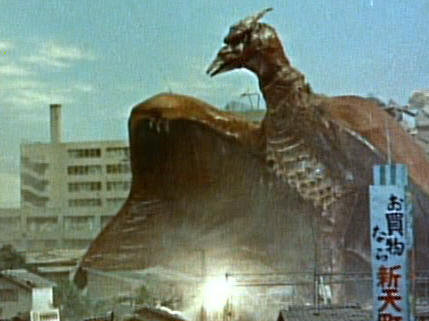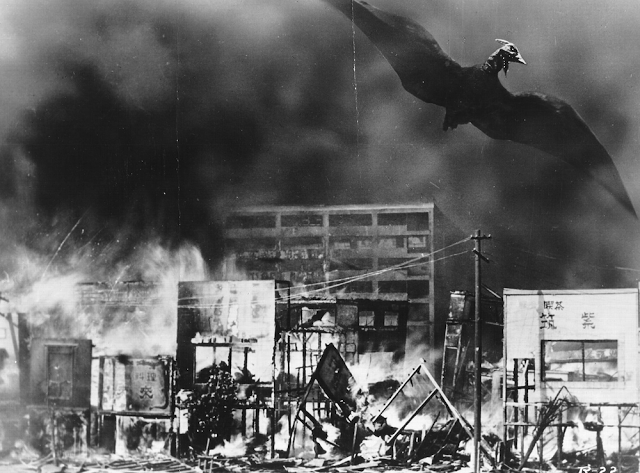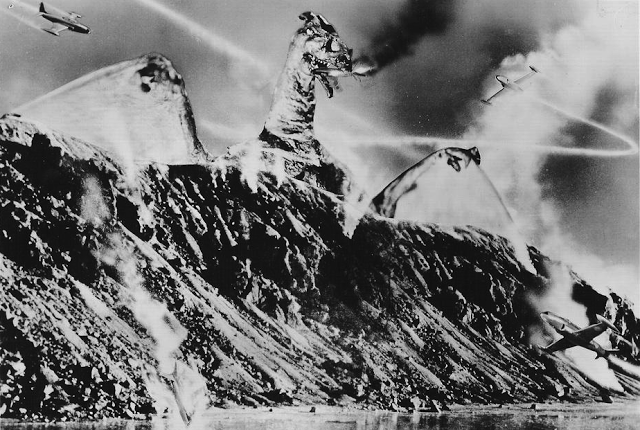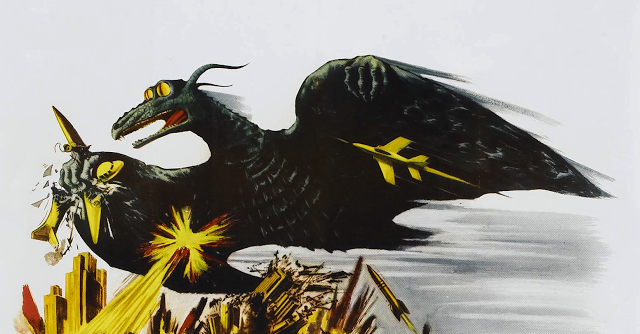Rodan was the first giant monster movie Toho did in color and it is something to behold.
Both the original Japanese version and the dubbed version released in the US have their ups and downs, but overall, as a giant monster movie, it’s one of the most memorable.
Dynamic scenes and dynamic monsters are the order of the day.
As mentioned with Mothra, Rodan’s symbolism is a bit more deistic.
Rodan is not worshiped, though, it harkens to something a bit more Japanese.
In Shintoism, everything has a spirit within it, from pebbles to mountains.
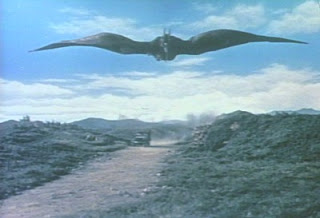 It’s easy to get away with ‘offending’ a pebble, but you’ll be in trouble if you offend a mountain, thus bringing natural disasters upon the offender.
It’s easy to get away with ‘offending’ a pebble, but you’ll be in trouble if you offend a mountain, thus bringing natural disasters upon the offender.
Rodan fits in that mold, being a quasi-personification of the natural world in this case. Rodan, though sky bound, fits the mold for a well-known natural disaster: the Typhoon.
Though the monster lives underground, its primary attribute is its supersonic flight and the windstorms it generates. Rodan is one of the most destructive monsters because of both its speed and the wide area its windstorms can affect.
The idea of Rodan being a personification of this sort of natural disaster is solidified by the way Rodan is defeated in the original film.
There, the two Rodans (Male and Female, of which only the male survives for subsequent appearances) are not slain by man’s weapons, but by an erupting volcano. Admittedly, it was triggered by the humans, but only as an accident. A risk they saw as worth taking ended up saving them.
This concept extends to most Kaiju (the giant monsters of Japan), especially the older ones. The one who made the word mean what it does today, however, has a bit more to say on it. They are the embodiments of disaster.
Biology
In Japan, Rodan is known as “Radon”, but not pronounced like the element. This is a take on the prehistoric animal “Pteranodon” and shares that phrasing (“Rah Don”). Pteranodon, obviously, is a Pterosaur.
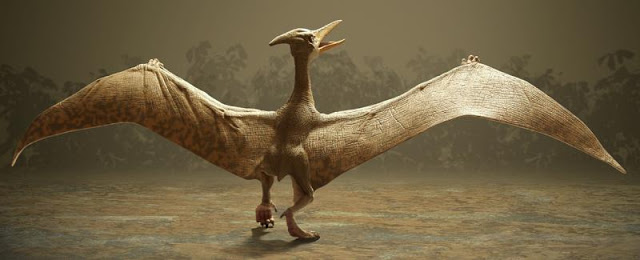 |
| Pterosaur |
The image of pterosaurs in popular media is honestly not the best. Between people thinking they are dinosaurs to Ray Harryhausen giving them batwings there are a lot of misconceptions about pterosaurs out there, and Rodan is sort of the grand duke of all of them, the biggest problem is its stance.
Rodan stands upright like a person (almost as if he were just a man in a suit, if you can imagine that).
Real World Pterosaurs are quadrupeds, walking along the ground in a similar matter to vampire bats. That might appear to be ungainly, but vampire bats at least are very spry little guys. Further, the feet given it are that of a bird rather than a pterosaur. These clawed appendages are meant for grasping and carrying prey, but are unique to birds, not pterosaurs.
They’re rather flatfooted.
It’s a primitive pterosaur, we can say that. Not as advanced as its namesake, but similar to one known fossil form in two great respects: it has teeth and a tail, but they are far reduced. This puts it at an intermediate stance between the two major pterosaur groups.
The first and more primitive pterosaurs were “Rhamphorhynchoidea” pterosaurs. These are typically quickly identified through their tails and teeth. The more advanced Pterodactyloidea lack tails; have larger heads; and the most advanced of them have no teeth. That’s actually where Pteranodon gets its name. Its name means “Toothless Wing” in Greek.
Pteranodon has minimal teeth, and a very short tail. There is fossil evidence for such animals. The tiny pterosaur Anurognathus has both those features, though its head is much shorter and rounder than Rodan’s. Though I highly doubt the similarity is intentional.
The crests on Rodan are rather interesting in and of themselves. Even today, we’re not entirely sure what the crest on Pteranodon was for. The same is the case with Rodan. The small, two pronged horns are swept back to not interfere with flight, but otherwise just sort of seem to be there. A proper display crest would be larger on the male and more brightly colored. Here, they’re just sort of there.
One thing they DID get right is the way pterosaurs reproduce.
It is now known that they laid eggs and cared for their young in the same way lizards do. That is to say, they dug a hole and buried them in the earth and leaving the future hatchlings to fend for themselves. This is how the two Rodans were born, though their eggs were apparently kept in ‘suspended animation’ for hundreds of millennia. That can happen with certain animals, like the tadpole shrimp (Triops cancriformis), can have their eggs dehydrated and they can survive for decades until water gets to them.
But reptile eggs are not the same, not by a mile. The hard shell and amniotic core don’t like to be dehydrated, not one bit.
So I guess that’s a half point.
I would be remiss if I did not mention the true giants of the pterosaur world.
Though not as big as Rodan, the Azhdarchidae were giants not just among flying animals, but among animals in general. Though some may have abandoned flight, they grew to be as large and share general body proportions as giraffes. These animals lived as storks, using their long beak to stab smaller prey items and swallow what they want whole.
They’re only just now coming to light as a true group, though we’ve known about one, Quetzalcoatlus, for decades now.
Now we know their true shape rather than being scaled up pteranodons.



































































































